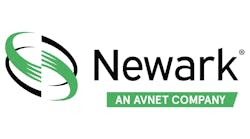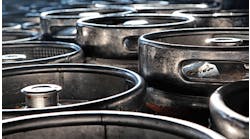|
P |
PG Industries is in the red, and the black, blue, green and yellow. In fact, PPG has never met or made a hue it didnt like. As the worlds largest producer of coatings for the transportation industry, PPG is in the business of creating an infinite palette of color for its automotive and other customers. And thanks to a new PLC-based, distributed control system at the companys Oak Creek, Wis. facility, its production process is a shade or two more accurate and cost-efficient.
The Oak Creek facility is a chemical batch manufacturing plant that creates finishes for automotive OEMs. Each order is custom-mixed to the customers specifications, relying on controllers throughout the process to ensure the batch meets strict quality standards.
When a salesperson enters an order, it is automatically scheduled based on the materials required and the length of production. Depending on the request, it can take as little as an hour or as long as a few days to process a single batch. Raw materials stored at the plant are weighed, measured and mixed to create the coating, and for some orders, PPG must heat the batch to generate the proper chemical reaction.
Each batch weighs around 70,000 pounds, said Joe Szul, PPGs resin plant operation manager. And if the weight is off by a few pounds or the temperature is a degree too hot, the entire batch must be reprocessed or discarded. Neither of those options was particularly good, he noted. Either scenario could dilute our profit margin, he concluded.
The plants centralized control system had grown old and increasingly unreliable. In addition, replacement parts for the loop controllers were hard to find because the system was obsolete. This meant any equipment failure could lead to prolonged downtime as engineers waited for replacement parts to arrive.
For a plant that operates on a tight production schedule, the cost of downtime would ultimately be felt both in production backlog and dissatisfied customers. It also hampered the continuous improvement program the plant had started.
Knowing that it would be possible to improve both accuracy and performance, and increase reliability, PPG made the decision to replace the aging control system. In making the change, the company set out to meet the following goals: boost production efficiency, reduce operating costs and get that promised increased reliability.
The new control system was built on five distributed Allen-BradleyPLC5/80controllers. Each controller was then linked to an Allen-Bradley Flex I/O module via ControlNet, which would relay system data back to the plants HMI. Using Flex I/O, a modular I/O assembly, provided a number of choices in control platforms, networks and mounting capabilities. This architecture enabled connecting new components like the PLC5/80s with existing technology platforms being used in other parts of the PPG plant.
But there was one major obstacle when it came to implementing the design. Because the plant operates on a 24-hour schedule, there were no opportunities to install the new control system while the plant was closed. The solution: engineers worked through the plant during scheduled breaks in the process, replacing individual sections of the line at a time.
In all, PPG mounted and networked more than 1,000 I/O modules. And due to fact that ControlNet terminals are built into Flex I/O, the company saw savings ofaround $2 million in wiring and associated labor costs.
Additionally, moving from centralized equipment to a distributed control platform made room for an operator control room. PPG uses this space to run its HMI system, which consolidates process data like temperatures, pressures, weight, and raw material status to give plant operators real-time production data. With this information, engineers can troubleshoot production events, order raw materials, schedule preventive maintenance and keep the plant running smoothly.
We have at least ten times more process data than we did before the upgrade, Szul said. This makes problem solving much faster and efficient. Plus, the information is in one database not spread across the plant floor which has helped our Sigma Logic methodology efforts, he concluded.
Even more valuable is whats happened on the plant floor. Since PPG installed the new system, downtime due to control equipment failures has dropped to near zero. Plant operators also have used the increased precision and reliability to eliminate substandard batches.



